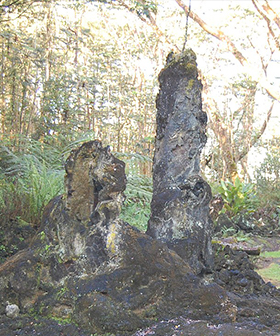

Location of Gotjawal
The Gotjawal region is widely distributed in the eastern and western regions of Mt. Halla. In Jeju Island, Hangyeong-Indeok, Aewol, Jocheon-Hamdeok, and Gujwa-Seongsan Gotjawal are distributed. Among them, Ecoland is Jocheon-Hamdeok Gotjawal, and the geological characteristics of this area best show the shape of Aa lava called Gotjawal Lava. Aa lava flow is a lava flow with a rough surface and many irregularities when basalt lava with low viscosity is ejected and hardened.


Jeju's conservation resource No. 1 'volcanic cluster'
Volcanic ash grains made when lava hardens when a volcano erupts. Volcanic clusters are a kind of clumps with strong adsorption and sterilization power, abundant minerals and antibacterial, detoxification, purification and moisturizing functions. It is packed. There is a pine tree barefoot experience center on the long-distance course, so you can feel the health of Jeju's nature while stepping on pine trees barefoot.
!
Gotjawal Lava
The lava flows in the Gotjawal area were formed by volcanic eruptions about 110,000 to 120,000 years ago and about 40,000 to 50,000 years ago, and about 500 types of plants are growing, with discontinuous and very limited plants growing.

Lava dome
Lava dome is a rare lava flow found in the Gotjawal region of Gyorae, and refers to a volcanic body formed in the form of a dome due to the viscous lava flowing out from the crater to the surface and cooling around the crater.

Volcanic bomb
During a volcanic eruption, unsolidified liquid magma spewed up into the atmosphere, cooled in the air, and hardened.

Lava tree
When Hallasan erupted, lava flowed around the surrounding trees and hardened.

Accretionary lava ball
Like the principle of a snowman, semi-solid rock masses roll and repeatedly attach and harden into a tree ring shape.